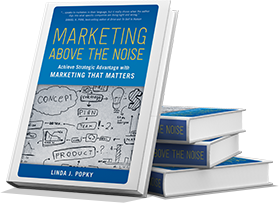At the recent LeadOn Conference for Women, sponsored by Watermark, I had the opportunity to chat with Maya Strelar-Migotti, Vice President and Head of Ericsson’s Silicon Valley site.
Strelar-Migotti is passionate about helping women, particularly technical women, break through the barriers that are holding them back. Her involvement in this area goes back to her work in Sweden as a member of a highly influential mentoring network sponsoredby the King of Sweden.
Five years after moving to Silicon Valley, Strelar-Migotti says there’s still not enough movement in terms of increasing involvement of women in senior executive roles and onboards of directors. In fact, she says the US is behind many other countries where Ericsson has operations, including China and Madrid, where more than a third of the engineering population is female.
I asked her what’s holding women back here. She notes that more women with the right technical qualifications are needed to apply for higher-level technical roles. That’s why added focus on getting more girls and women involved with STEM areas is so important—especially since in both the US and Sweden the trend is to see less women entering STEM-related fields.
But Strelar-Migotti says that’s not enough. Companies need to accept responsibility for changing the work environment as well. Ericsson created a Women in Leadership organization that organized speed mentoring, invited guest speakers, and brought in talent management executives to explain career paths opportunities.
That wasn’t enough. The company realized it could not just work through women—it had to involve the entire extended management team on site. Strelar-Migotti says Ericsson tries to raise awareness of unconscious biases so they can be addressed. They established the role of company engagement manager, realizing it was important to build the proper culture across everyone at a site, not just the women.
“If you want to have change, you need to create a baseline and a framework,” she says, noting that Silicon Valley is tougher than many other places because of the large number of engineers needed. There are also many different nationalities that interact at a site like Ericsson’s. Each group brings their own subculture, which needs to be integrated into the culture of the bigger organization.
“Company culture is both the biggest enabler and the biggest hindrance,” says Strelar-Migotti. “If you are not working on the culture of the company in many, many different ways, you won’t see things move forward.”
Ericsson has set metrics for success. The company conducts an annual survey of employee engagement, diversity, and inclusion and compares results to previous years. Ericsson also looks at the number of managerial roles filled with women within a business unit to see if progress is being made.
Strelar-Migotti’s advice for managers is to listen to your female employees. “Look at them in a different way. Not all women will come forward and brag about what they’ve done.”
For women, her advice is simple. “Tell management what you want. Have an open dialogue with your manager,” she says.
The payoff, she says, is that companies that create more diverse environments perform better. Millennials in particular are looking for companies where they feel the environment is more gender neutral, she notes.
But it all comes back to culture. “Culture beats strategy every time.”




